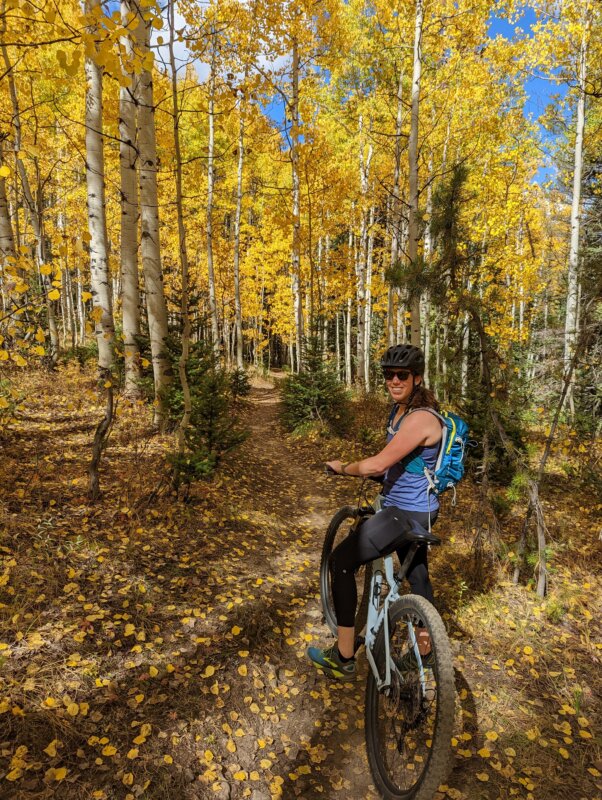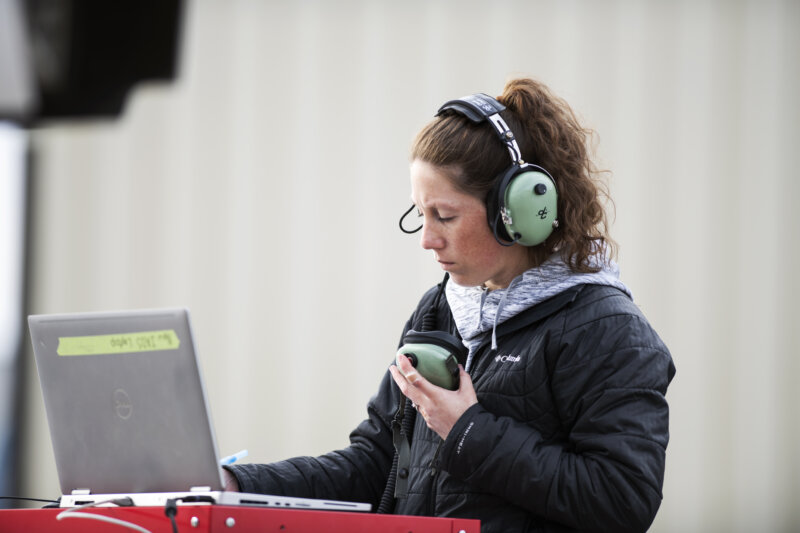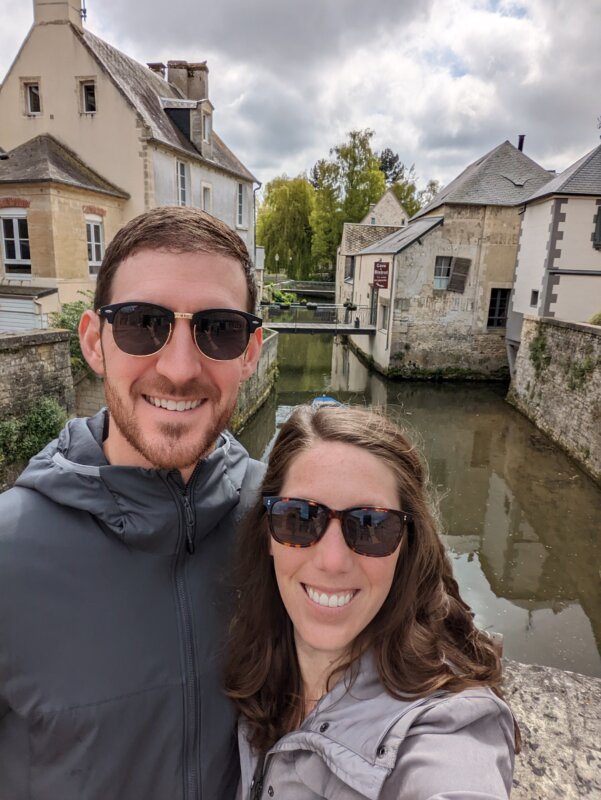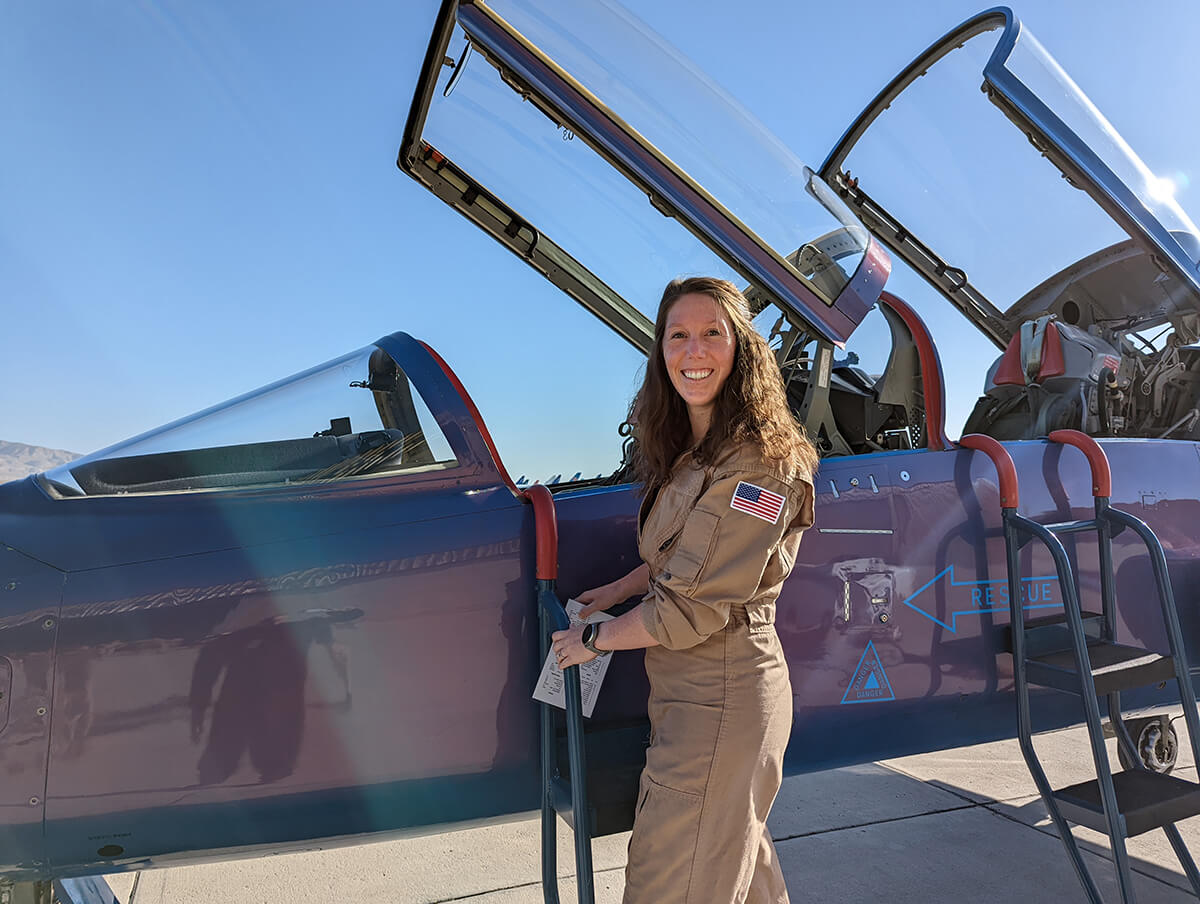It’s the first week of April 2023, and Erin Young ’09 has just arrived in the Mojave Desert to take the next big step in supersonic commercial air travel.
If the thought of fast airplanes in the Mojave conjures up visions of The Right Stuff—the Tom Wolfe book and 1983 film with test pilot Chuck Yeager flying at supersonic speeds over the desert—you know exactly where Young is working. She will be in mission control as Boom Supersonic’s XB-1, a demonstrator “proof of concept” aircraft that flies faster than the speed of sound, makes its first test flight.
“It will be a very rewarding day,” Young says. “We have worked hard to get to this point, and I am so excited to see it happen. It’s a big moment.”
The XB-1 is part of the development of Boom Overture, a commercial aircraft with a cruise speed of Mach 1.7, designed to bring the world closer together through efficient and affordable supersonic travel. As the Aircraft Systems Lead on the XB-1, Young oversees all the systems that control the aircraft, including propulsion, flight controls, landing gear, hydraulics, electrical, and environmental control systems.
Erin Young (previously Erin Fisher) has come a long way from the Colorado Academy Seventh Grader whose life was changed by Middle School Interim—a long way from the Notre Dame freshman who called home in tears after seeing the grade on her first calculus test—a long way since her first days at Boom Supersonic when she was the only woman engineer working toward the goal of revolutionizing air travel.
‘Yes to the opportunities of aviation’
It’s been nearly 20 years since Young hopped on a bus with dozens of her CA classmates and headed to Space Camp at the Cosmosphere in Hutchinson, Kansas, but she still remembers the day she found her future. There was an actual shuttle simulator flight at the camp, and she got to be the commander of the mission, communicating with mission control, taking off, going to the space station, doing experiments, landing the space shuttle.
“It was the best week of my whole life,” she recalls. “You could visualize what it would be like to go to space in a way that just hearing about it didn’t portray.”
She came home and announced to her parents that she was going to become an astronaut. But what did she (or they) know about that career path? Not much, she recalls, with a laugh.
“I thought I should study astronomy in college,” she says. “Fortunately, the CA college counselors knew a lot more than I did.”

Also lucky for her, the college that had been in her stars since she was born—Notre Dame, where her parents had met—offered a top-notch aerospace engineering department. During the summer before her senior year at Notre Dame, she landed a plum internship, working for NASA on the New Horizons mission to Pluto.
“I wanted to do something that few other people had done, something that would have impact,” she says. “I was so curious about space and space travel, and I really wanted to be part of that world.”
To her surprise, she discovered that NASA—a large, slow-moving organization—was not for her.
When she returned to Notre Dame for her senior year, she pivoted, leaving her Seventh Grade dream behind as she “fell in love with aviation instead of aerospace.”
“I never said ‘No’ to being an astronaut,” she says. “I just said ‘Yes’ to the opportunities of aviation.”
Straight out of college, she was hired by Cessna to work on the rapid prototype development of a military aircraft that would be more affordable than an F-16 and more capable than a drone. It was the opposite of her NASA experience—working with a small, agile team, she climbed a steep learning curve as she took the project from clean-sheet design to first flight in 22 months.
With the salary from her first job, Young decided to fulfill another dream by earning her pilot’s certificate.
“Learning to fly was one of the best choices I have ever made, both for me personally and for my career,” she says. “I am designing and building aircraft, so understanding the pilot’s perspective is a really important element of that.”
Learning to fly proved to be life-changing in another way, when her flight instructor connected her to a very small start-up company in Denver. And that’s how she ended up at Boom Supersonic, designing and building a plane that flies so fast it can make the world a smaller place.
‘Rock star engineer’
Boom Supersonic’s stated mission is “to make the world dramatically more accessible.” The company now has more than 300 employees and is partnering with major commercial airlines committed to acquiring a fleet of sustainable supersonic aircraft. But when Young signed on seven years ago, she was only the tenth employee. Joining this nascent company may have seemed risky, but when she interviewed for the job, she was sold on the mission.
“Bringing back efficient and affordable supersonic flight is the next big thing in aviation,” she says. “I really wanted to be a part of that because it is one of the few things in aviation that can meaningfully impact the world at this point.”

Another reason Young joined Boom was the company’s support of women engineers. She had joined the Society of Women Engineers (SWE) when she was at Notre Dame. Boom sponsored her trip to a SWE conference to recruit more women engineers and encouraged her to write company blogs that would inspire more women to join the company. She led an internship program for the company one summer where 50% of the participants were women.
“Companies tend to hire within their own network and that generally means people who look like them,” Young says. “We want to broaden our diversity lens in general, hiring people who bring different experience and perspectives and better solutions to problems. Hiring more women is an easy target, but you can’t stop there.”
Young would like to see a future for women engineers where they do not have an experience such she did at an early Boom media event. A reporter saw her in the room and assumed she was the CEO’s assistant. The CEO set the reporter straight: “Actually, Erin is one of our rock star engineers, and you will be interviewing her today.”
‘You’ve got this, kiddo’
Even though her work demands highly specialized skills, Young believes one of the great advantages of her seven years at CA and her education at Notre Dame was the focus on liberal arts, an education designed to create a well-rounded person with strong communications skills.
“Having successful communication skills has been huge in the engineering field,” she says. “My ability to explain more than just the specifics of engineering issues in a start-up enables me to contribute outside the job I was hired for.”

Those communication skills have come in handy as she has helped grow Boom, building a company at the same time the company was building a plane. She has also relied on team-building skills that she developed at CA when she participated on the volleyball and tennis teams. Her love for writing, which was encouraged at CA, made it hard to choose between majoring in creative writing and aerospace engineering in college, and she has continued to use the writing skills she developed at CA in her work to this day.
She believes CA prepared her well for the academic challenges at Notre Dame. Still, she was shocked when she got her first college calculus test back and discovered she had scored a “54.”
(She didn’t know that Notre Dame engineering tests were graded on a curve, so her actual grade was a “B.”)
She called her mother and wailed, “I’m not smart enough to be an engineer!” Her mother simply said, “You’ve got this, kiddo.” And Erin Young has been flying ever since.
